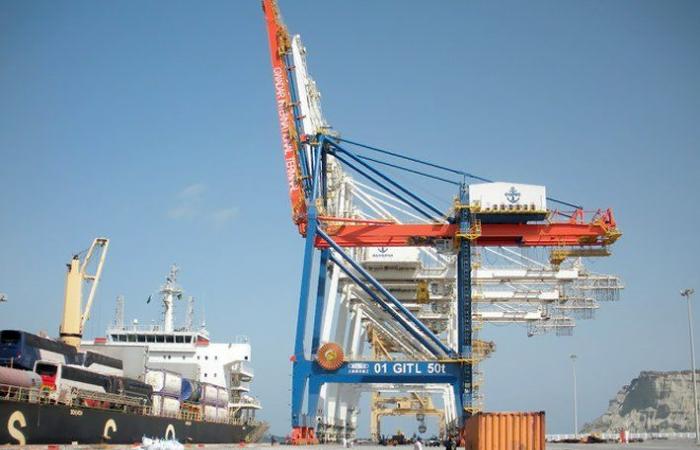Thank you for reading the news about China Pakistan Economic Corridor is a game-changer and now with the details
Jeddah - Yasmine El Tohamy - The China Pakistan Economic Corridor (CPEC), presently under construction at a cost of $46 billion, aims to improve Pakistani infrastructure and deepen the economic and political ties between China and Pakistan.
CPEC is advantageous to Pakistan but also carries substantial economic and strategic benefits for China.
Its importance for China is evident from the fact that it is part of China’s 13th five-year development plan.
CPEC will boost ties between China and Pakistan, which share a history of congenial strategic relations, over a versatile canvass of mutual interest extending over six decades.
In the past 65 years, both countries have developed strong bilateral trade and economic collaboration.
China is Pakistan’s largest trading partner in imports and exports. And CPEC is going further to enhance the lucrative economic cooperation between the two countries.
If realized, the plan will be China’s biggest splurge on economic development in another country to date.
Consul Syed Hamzah Saleem Gilani
It aims over 15 years to create an economic corridor between Gwadar Port to China’s northwestern region of Xinjiang through the 2,700 km long highway from Kashgar to Gwadar, railway links for freight trains, oil and gas pipelines and an optical fiber link.
The project will create nearly 700,000 new jobs and add up to 2.5 percent to Pakistan’s annual growth rate.
CPEC has undeniable economic and strategic importance for Pakistan and China. It has been called a game-changer for Pakistan because it will link China with markets in Central Asia and South Asia. Presently China is some 13,000 km from the Arabian Gulf with a shipping time of about 45 days.
CPEC will shrink this distance to merely 2,500 km (an 80 percent reduction).
The shipping time will reduce to 10 days (a 78 percent reduction). The bulk of China’s trade is through the narrow sea channel of the Strait of Malacca.
Top security analysts say that in the event of a future war in Asia, the US Navy could block the Strait of Malacca, which would suffocate China’s trade route. CPEC, besides providing an alternate route, will reduce the shipping time from China to Europe.
The largest part of the project would provide electricity to energy-thirsty Pakistan, badly affected by hours of daily scheduled power cuts because of electricity-shortages, based mostly on building new coal-fired power plants.
The plans envisages adding 10,400 megawatts of electricity at a cost of $15.5 billion by 2018. And after 2018 a further 6,600 megawatts, at an additional cost of $18.3 billion, will be added, doubling Pakistan’s current electricity output.
The CPEC brings many benefits for China and Pakistan, but it is also challenged by security-related and political threats.
There are two major sources of threat: Indian involvement, and the separatist rebellion in Baluchistan where the port of Gwadar is situated.
Both dimensions of threat are interconnected because recent arrests of Indian spies by Pakistan reveal that the Indian government is spending a huge amount of money and resources on sabotaging the CPEC project.
Apart from espionage activities, India is also supporting the Baloch rebels. Nevertheless, Pakistan is well-equipped, with adequate security and infrastructure support to effectively deal with such challenges. Operation “Zarb-e-Azb,” which has received international recognition, has flushed out the major chunk of extremists from Pakistan’s soil.
The political side of the project for Pakistan is also not rosy.
It is always difficult to achieve political consensus on an issue. The Kalabagh dam project, for example, which is considered to be extremely important in addressing Pakistan’s water-shortage problems, has been subjected to political controversy and still awaits construction.
Similar formulas are being applied to CPEC. Drums of provincialism are being beaten loudly to make CPEC another Kalabagh dam.
However, this time sanity has prevailed in the political leadership and controversies were nipped in the bud at an early stage. Besides the efforts of political leaders, the contribution of the Army chief should not go unappreciated.
He took a special interest in this project and provided — and ensured for the future — the Pakistan Army’s full support for the mega-economic project.
CPEC has the potential to carry huge economic benefits for the people of Pakistan and the region. According to a recent estimate, CPEC will serve three billion people, nearly half of the global population. Thus a huge economic bloc is about to emerge from this region.
On completion of the CPEC, Pakistan will become a connecting bridge to three engines of growth: China, Central Asia, and South Asia.
It will create many jobs and elevate Pakistan to high growth rates, which will ensure Pakistan’s stability and serve as a deterrent to extremism and violence.
The completion of CPEC is not going to be an easy task because it has attracted international conspiracies, against which it must be protected.
The economic dividends of this project, by connecting all the economies of the region, are going to be so high that once this project is in full-operation even our neighbor India might ultimately join the club for greater economic benefits.
• The author is Pakistan’s press counselor in Jeddah
These were the details of the news China Pakistan Economic Corridor is a game-changer for this day. We hope that we have succeeded by giving you the full details and information. To follow all our news, you can subscribe to the alerts system or to one of our different systems to provide you with all that is new.
It is also worth noting that the original news has been published and is available at Arab News and the editorial team at AlKhaleej Today has confirmed it and it has been modified, and it may have been completely transferred or quoted from it and you can read and follow this news from its main source.


